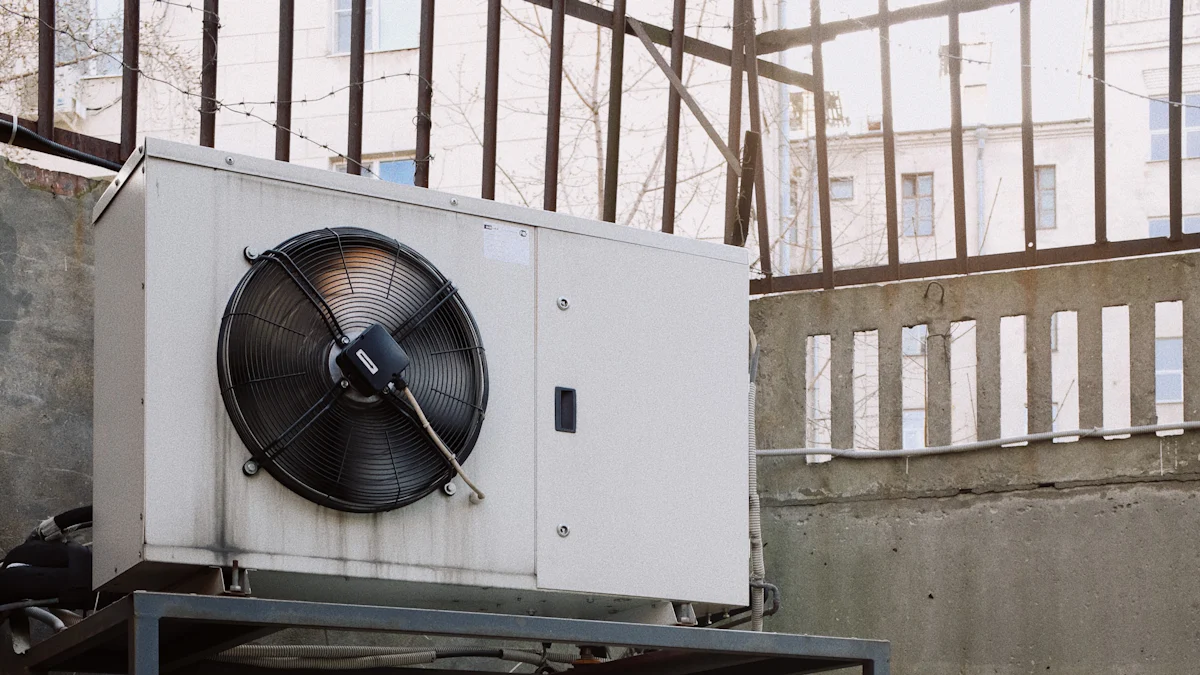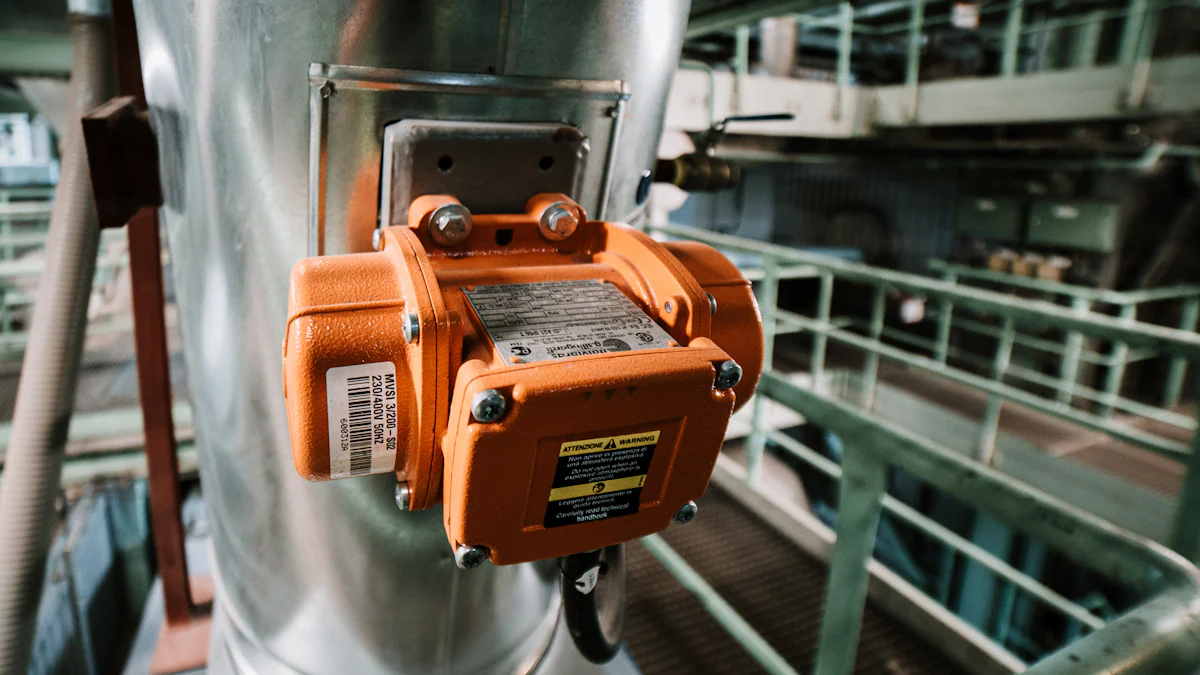
News

Industries in 2025 need smart and eco-friendly solutions. The application effect of VFDs in air compressors saves lots of energy, cutting power use by 25%. They adjust motor speed, stop wasteful cycles, and provide exact air supply. This lowers energy bills by about 18%.
Key Takeaways
VFDs use less energy by changing motor speed to fit air needs. This can lower power use by up to 25%.
Using VFDs can reduce energy costs by about 18% over time. This makes them a good choice for businesses.
VFDs are better for the planet by cutting harmful gases. They help industries reach eco-friendly goals.
Understanding How VFDs Help Air Compressors Work Better
What VFDs Do and How They Work
VFDs, or Variable Frequency Drives, help air compressors work smarter. They change motor speed by controlling the power sent to it. This makes sure the motor runs only as fast as needed. Unlike old systems that always run at one speed, VFDs adjust to what the system needs.
The table below shows how VFDs work and save energy:
This control saves energy and makes air compressors work better.
Adjusting Motor Speed and Power in Real-Time
VFDs are great at changing motor speed and power as needed. The air compressor’s airflow matches the motor speed. By changing speed, VFDs save energy and keep things running smoothly.
When less air is needed, VFDs slow the motor, saving energy.
When more air is needed, VFDs speed up the motor without wasting power.
This stops the motor from running at one speed all the time, which wastes energy.
VFDs also start motors gently, avoiding sudden power surges. This protects parts, making them last longer and work better.
Handling Changing Air Needs with Accuracy
Factories often need different amounts of air at different times. VFDs handle these changes very well. They adjust motor speed using smart rules instead of old, less efficient methods.
VFDs quickly react to changes in air needs or conditions.
They keep air pressure steady so tools work without stopping.
By giving just the right amount of air, VFDs save energy and improve performance.
This ability to adapt makes VFDs important for saving money and helping the environment.
Key Benefits of VFDs in Air Compressors

Energy Savings and Cost Efficiency
Using VFDs in air compressors saves a lot of energy. Unlike older systems, VFDs stop wasteful cycles and lower pressure. This helps reduce energy use. The table below shows how much energy you can save:
VFDs adjust motor speed to match the work needed. This avoids wasting energy when less air is required. Some places using VFDs have cut energy use by up to 50%. While installing them costs more at first, the savings on energy and repairs make up for it over time.
Pressure Stabilization and Consistent Output
Keeping air pressure steady is very important for smooth work. VFDs are great at keeping pressure stable by changing motor speed as needed. This gives tools a steady air supply, helping them work better. With VFDs, you avoid problems caused by pressure changes, which happen in older systems.
Longer System Life and Less Maintenance
VFDs help air compressors last longer by stopping harsh start-stop cycles. For example, a car company in Pune saved 40% on power and made parts like valves last longer after using VFDs. They also reduce heat and make oil last longer, cutting down on repairs. Many places see their investment pay off in just six months.
VFDs stop wasteful cycles, saving 25-30% power.
Over 15 years, energy costs drop by 18%.
Helping the Environment: Lower Carbon Footprint
VFDs do more than save money—they help the planet too. By using less energy, they cut down on harmful gas emissions. Over 15 years, a system running all day can save 18% on energy costs. This makes VFDs a smart choice for industries wanting to go green.
Tip: Switching to VFD air compressors saves money and helps the environment.
Future Trends in VFD Technology for Air Compressors
Smarter VFD Systems and Predictive Maintenance
Smarter VFD systems are changing how air compressors work. They use advanced tools to make motors run better. Features like vector control save energy and improve response time. Predictive maintenance helps stop sudden breakdowns. By checking real-time data, smart VFDs find problems early. This cuts downtime and lowers repair costs.
Smaller designs are also becoming popular. Companies now make compact VFDs that fit in small spaces. These are easier to set up and take care of. With more demand for energy-saving tools, smart VFDs are now a must-have for industries everywhere.
IoT Integration for Better Monitoring
Adding IoT to VFDs is changing air compressor management. IoT-enabled VFDs let you check and control systems from anywhere. Cloud platforms show real-time data on energy use and system health. This helps you make quick and smart choices.
IoT also improves predictive maintenance. Sensors track motor speed, heat, and pressure. This data shows where to fix problems and improve efficiency. Using IoT-enabled VFDs makes systems more reliable and saves energy.
Innovations Leading Air Compressors in 2025
New ideas are shaping the future of air compressors. Variable speed compressors save energy and cut costs by adjusting airflow. Oil-free compressors are another big step. They give cleaner air and lower harmful emissions, helping the planet.
Carbon zero compressors are setting eco-friendly goals. They use no extra energy, perfect for green industries. Smart features like LED screens and auto-drain valves make them easier to use. These changes will make air compressors more efficient and eco-friendly.
Tip: Follow these trends to stay ahead and meet future needs.
Using VFDs in air compressors saves energy and helps the planet. They cut energy use by 25% by stopping wasteful cycles. VFDs also lower pressure drops, saving even more energy. These systems meet energy rules and reduce harmful emissions. They are reliable and improve how compressors work. Choose VFD air compressors to save money and prepare for the future.
FAQ
Why are VFDs useful in air compressors?
VFDs save energy by changing motor speed to match air needs. This cuts waste, lowers bills, and makes systems work better.
How do VFDs help the environment?
VFDs use less energy and cut carbon emissions. They improve efficiency, helping industries meet green goals and follow eco-rules.
Note: Using VFDs helps your business and protects the Earth.
Please give us a message